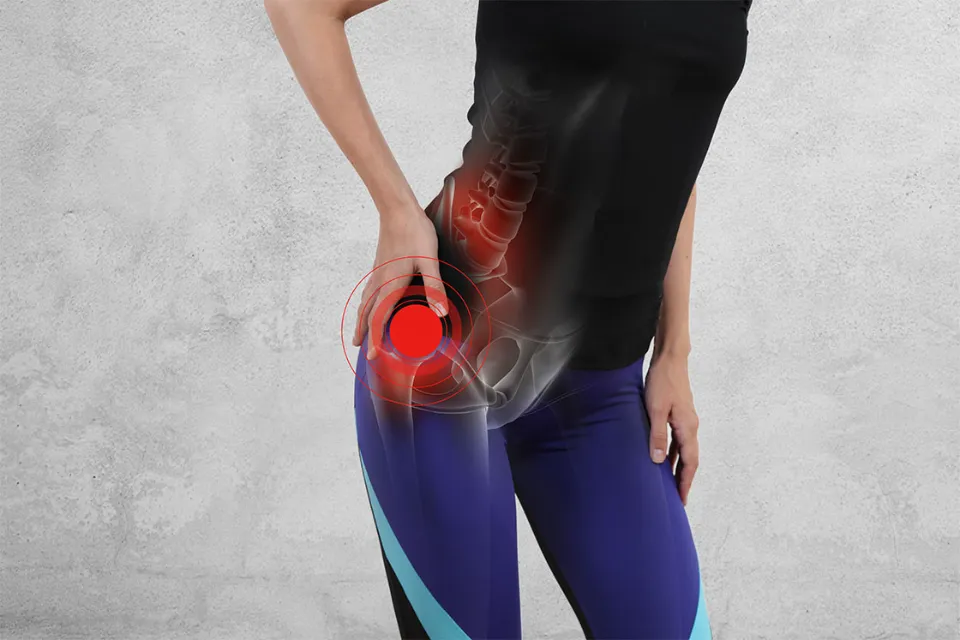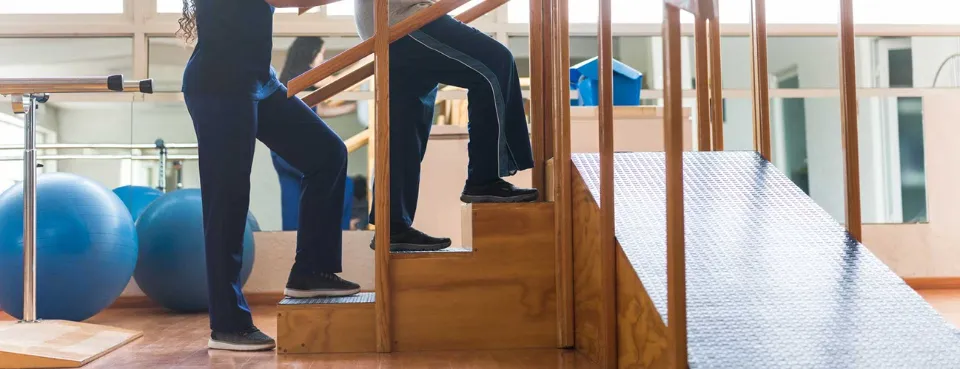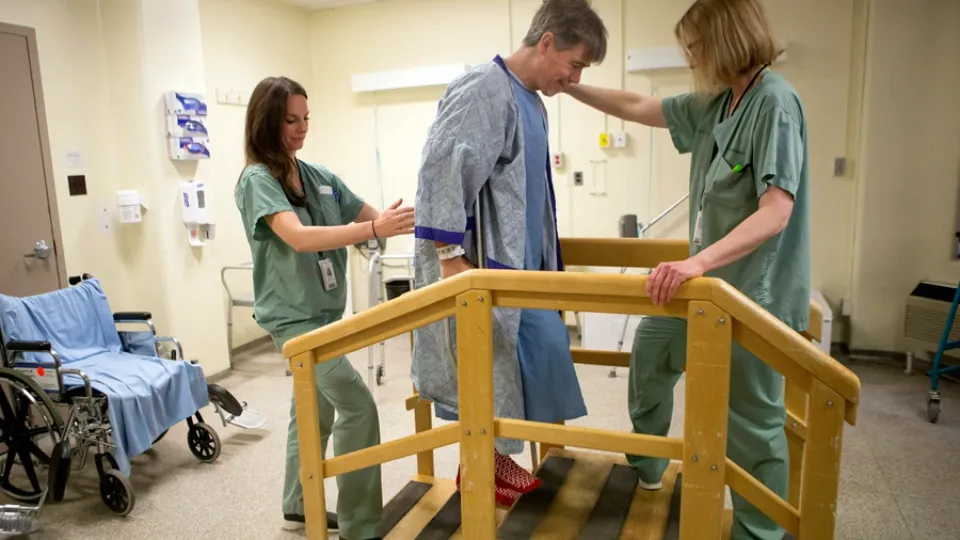Total hip replacements sound like a procedure that will require a lot of recovery time in bed, but they aren’t as frightening as they might seem. Following a hip replacement, you can walk right away, but you should still exercise caution. A total hip replacement requires at least two weeks of recovery time, with full recovery taking six to twelve months, depending on the patient.
The first question that comes into everyone’s mind after a hip replacement is: “When am I able to begin walking without a cane?”
Read more: How Long Does It Take a Hip Fracture to Heal? – Elder VIP
What to Expect After Hip Replacement?
Following surgery, the majority of patients can begin walking and depart for home. I doubt you’ll need to stay in bed. However, some factors may prolong your stay in the hospital for some time, such as:
- Pre-existing medical conditions like heart or lung diseases
- Lack of support at home
- Particularly complex surgeries needing observation
In addition, you shouldn’t drive for a while after getting a hip replacement.

How Long Can I Walk Unaided After Hip Replacement?
Without a doubt, being able to walk without assistance while being pain-free ranks as my hip replacement patients’ top post-operative objective. walking specifically without a cane or other aid.
This may seem like an overly simple objective, but let’s say you’ve reached the point where you need a new hip to feel comfortable in your daily activities. In that case, you’ll probably just want to walk normally at first and see what happens from there.
You can expect to walk unaided after hip replacement around your home anywhere from 3-6 weeks after surgery depending on your age and overall health. The 3 week range would be someone who is younger (under 70) and in good health. The goal of having your hip replaced should always be to be able to walk without assistance after a total hip replacement. However, some people who are older and in worse health may still need a cane.
If you have had your hip replaced, you might be wondering how you will know when you are able to walk without assistance or when you are ready. It takes some knowledge to answer this excellent question so you can return to walking normally in safety.
To avoid any setbacks in your recovery at home, make sure you follow the advice of your physical therapist regarding the progression of your walking. Physical therapists are well-versed in gait and walking analysis.
For the first two months, I actually advise you to bring a cane with you on any trips or outings outside of your house. This is simply for safety and letting others know to give you space and lessen the risk for falls.
For most people, being able to walk unassisted will be a great accomplishment because it shows that they may be able to once again walk long distances. Your daily mobility in and out of your home should be normal.
Your ability to finally walk normal (as in normal distance for you) with no noticeable limp should return in 6-12 weeks. If it captures the longer range, don’t be discouraged. Your leg has likely grown accustomed to walking in a different way for years. Be patient; it simply takes time to learn a new pattern.
How to Walk Properly After Hip Replacement?
When you first take a few steps without a cane or walker, you should anticipate feeling some minor discomfort in your thigh or buttock region. You haven’t taken normal steps in a while, so why would this be, right?
This is because the pain from your previous hip arthritis was so severe that you required a hip replacement. Your body will probably be trying to let you know through some discomfort that it is a little hesitant to support your entire weight on its own.
You will typically still be taking pain medication at this point (weeks 3 to 6). It might just be acetaminophen or ibuprofen, a mild narcotic, or both. The additional medication ought to lessen some of the discomfort experienced when attempting to walk correctly. In addition, always walk with supportive shoes to lessen the strain on your new hip, even inside the house.
Don’t forget that for additional pain relief, you should continue to apply heat, ice, or a combination of the two. A smart move would be to warm up the leg for 20 to 25 minutes before walking. After that, apply ice for 20 to 25 minutes to both relax the tissues and then ease the pain.

Activities to Avoid After Hip Replacement Surgery
Keep in mind that your medical professional and physical therapist are there to assist you in getting better and leading a better life. You’ll have the best chance of recovering quickly and permanently if you follow their advice. Below are some activities that will need to be avoided after your replacement:
- Do Not Bend at the Waist More than 90 Degrees: This includes stooping to tie your shoes, sitting in a low chair, or performing any other activity that necessitates bending at the waist. The likelihood that the new hip will become misaligned is increased by these factors.
- Do Not Resist Movement and Get Up: Do as your surgeon or physical therapist instructs in the days following surgery, including getting up and moving around. Even though it might seem premature, doing this will prevent blood clots and hasten the healing process.
- Don’t Cross Your Legs: Depending on the type of hip replacement surgery you underwent, you might not be able to cross your legs for a few days, a few weeks, or even for a very long time, especially the operated leg over the unoperated leg. Additionally, the hip joint may pop out of place as a result of this.
- Do Not Lift Your Knees Past Your Hips: The hip socket can become dislodged if you stoop too low at the waist. If your knees are elevated above your hips, the same thing may occur.
- Do Not Rotate Your Feet too Far Inward or Outward: Your feet should ideally point in the same general direction as your hips. It’s crucial to remember this whether you’re moving, standing, sitting, or lying down.
- Do Not Twist or Pivot at the Hips: As a general rule, try to keep your chest and hips facing the same direction as much as you can.
- Do Not Rush the Healing Process: Despite your desire to live independently once more, you don’t want to take the chance of getting hurt again. You have the option to recover in a skilled nursing facility after you leave the hospital if you don’t feel ready to handle the responsibilities of daily life. There, you will receive the support required to heal and improve at your own pace.
- Do Not Drive Until You are Cleared to do so By Your Doctor: After getting a new hip, everyone’s driving style is unique. After receiving a new hip, some people are able to resume driving within a few weeks, while others require additional recovery time before they can safely operate a vehicle. To ensure your safety on the road and that driving won’t hinder your recovery, discuss it with your doctor before you get behind the wheel.
Summary
As previously stated, for the first 1-2 months, you should always bring a cane or walker on any trips or outings outside of your home just for safety. Within three to six weeks, you ought to be able to stand up without a walker or cane. Your age and health status will determine when in the timeframe range for you.
FAQs
When Can I Bend Down After Hip Replacement?
After surgery, you shouldn’t bend your hip more than 60 to 90 degrees for the first six to twelve weeks. It’s crucial that you avoid crossing your legs or ankles. It’s best to avoid bending down to pick things up during this time.
When Can I Sit on a Normal Chair After Hip Replacement?
Avoid low sofas, recliners, and zero-gravity chairs for the first six weeks and try to sit in a chair with a straight back.



